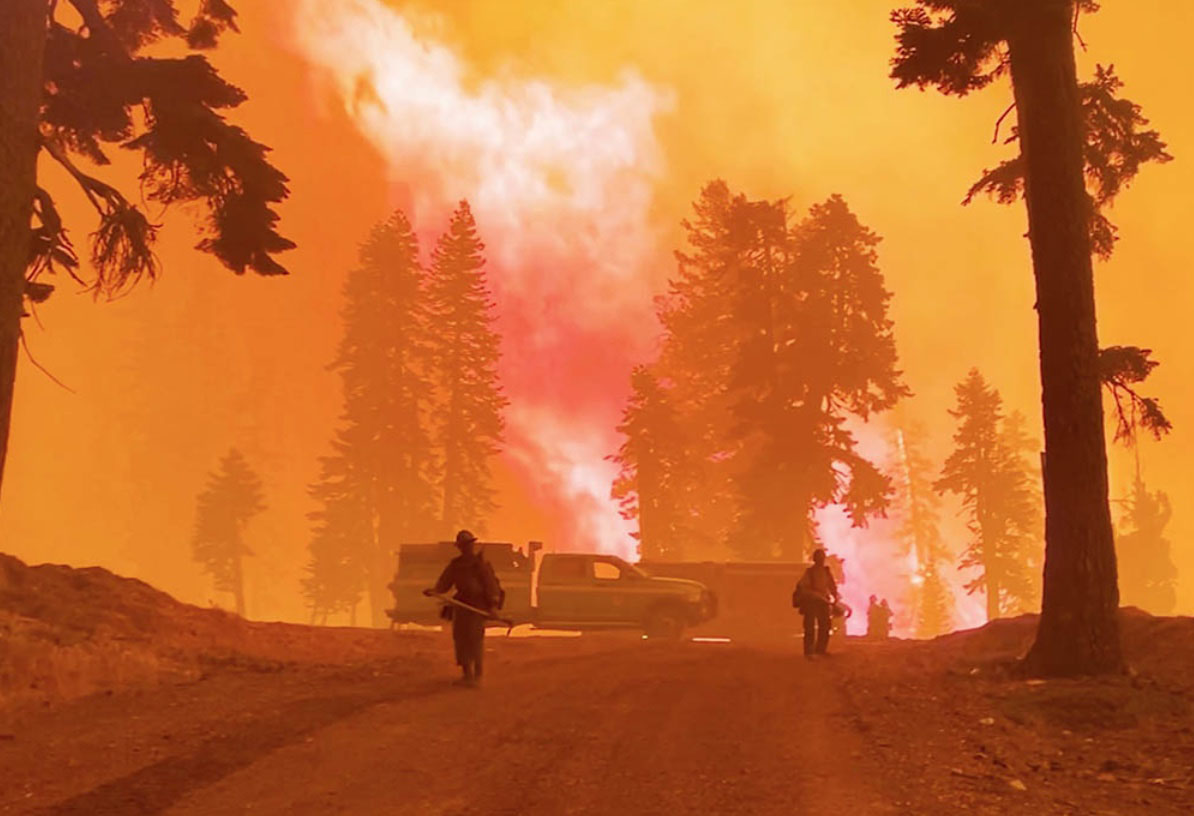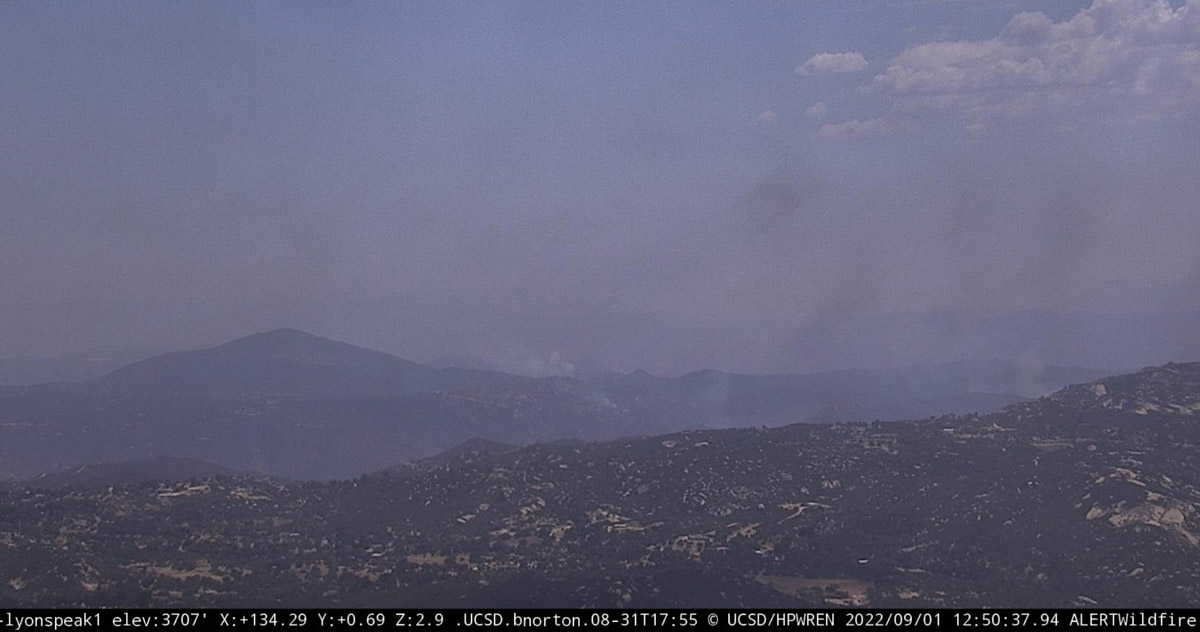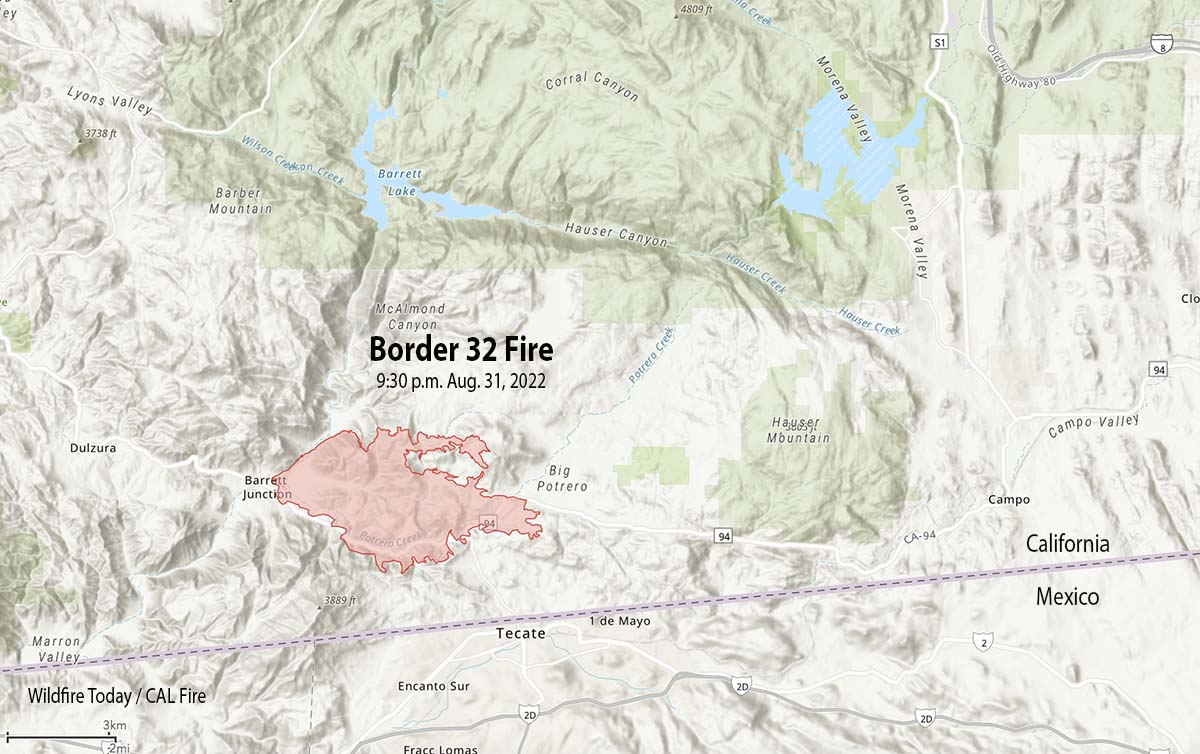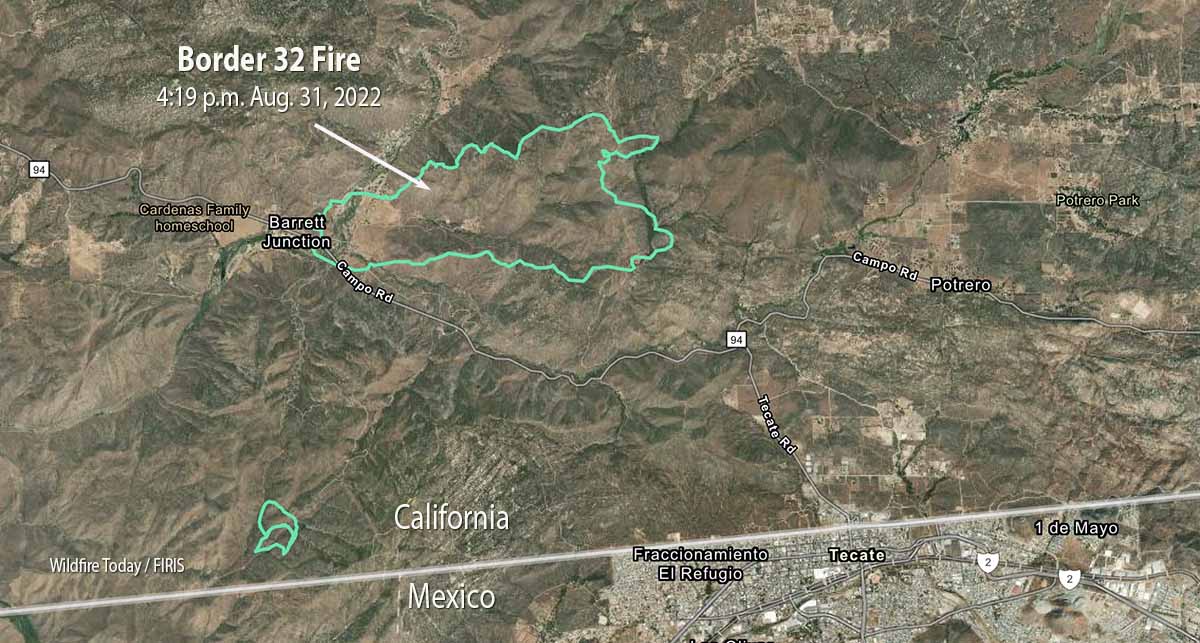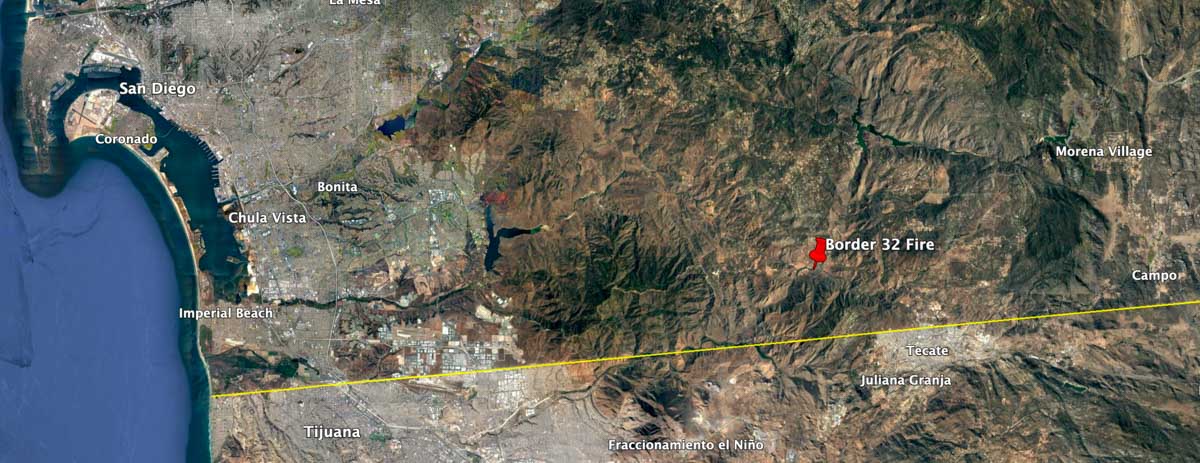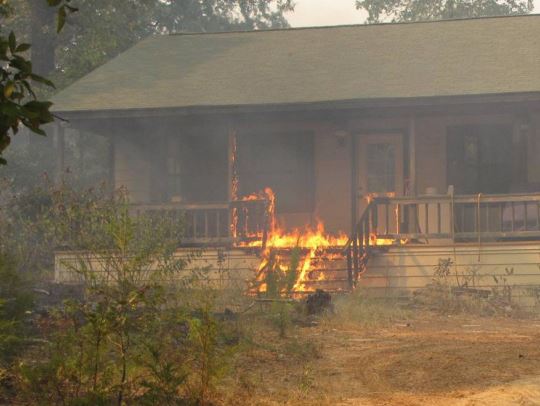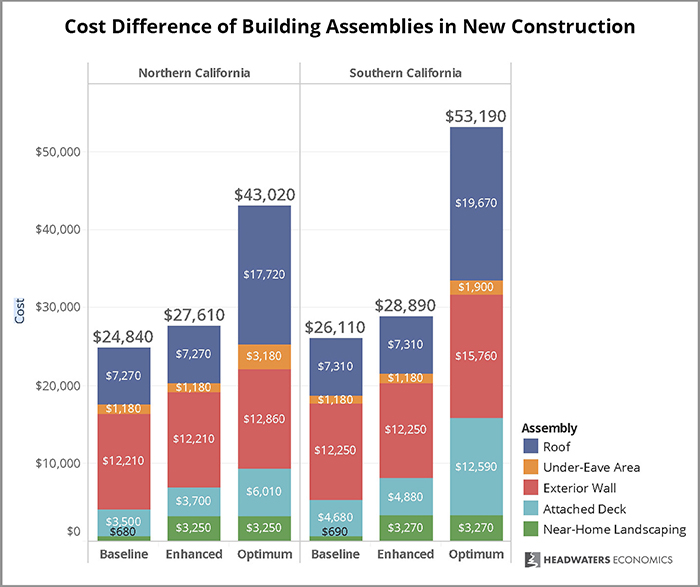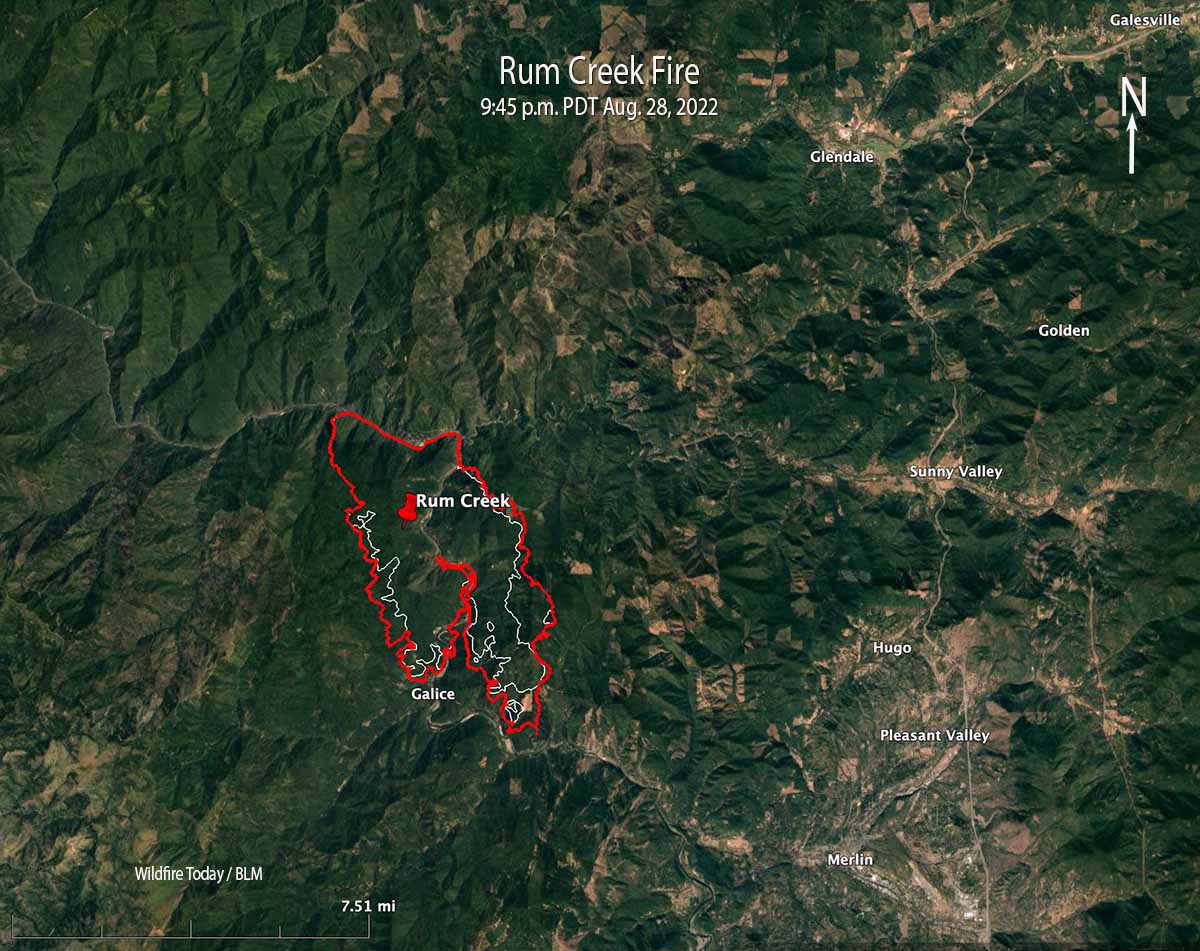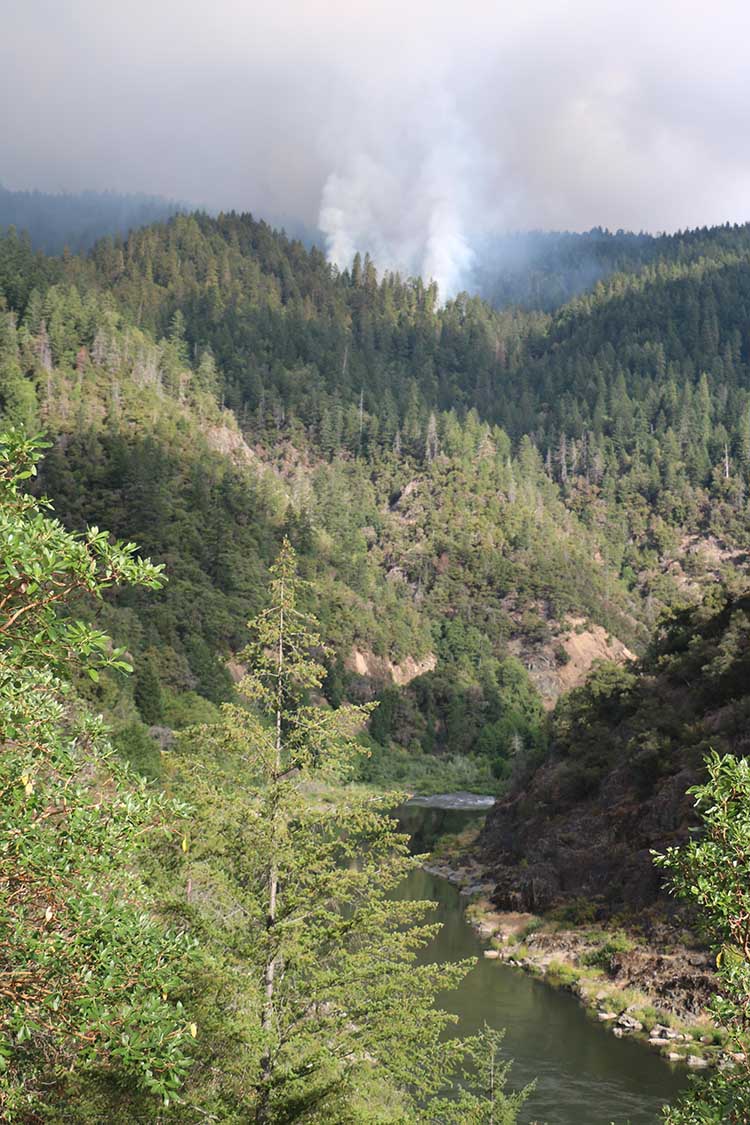Updated at 8:30 p.m. PDT Sept. 3, 2022
Mill Fire
At 7 p.m. Saturday CAL FIRE reported that damage assessment imagery indicates 132 structures have been affected by the Mill Fire. This includes all structures of any kind including outbuildings that were damaged or destroyed. On Sunday damage assessment teams will begin ground truthing the data. The size has been updated to 4,254 acres and about 1,000 residents have been evacuated.
Mountain Fire
Also at 7 p.m. CAL FIRE said the Mountain Fire east of Weed, CA has burned 4,812 acres. There have been no reports of destroyed structures and 690 remain threatened. Approximately 332 people have been evacuated.
At 4 p.m. on Saturday CAL FIRE Incident Management Team 5 assumed command of both fires.
Updated 4:31 p.m. PDT Sept. 3, 2022
The Sacramento Bee is reporting that 100 homes have been destroyed in the Mill Fire, according to the Mayor and a CAL FIRE Unit Chief. Most of the homes were in the Lincoln Height area.
Scenes of the wreckage from the #MillFire burning in Siskiyou County. These are homes just off Highway 97, off Lincoln Ave. and on Wakefield Ave. in Weed
The #MillFire has burned almost 4,000 acres and is only 20% contained @KRCR7 pic.twitter.com/t3LisOKM6s
— Sam Chimenti (@sam_chimenti) September 3, 2022
The nearby Mountain Fire is smoked in, making it impossible for firefighting aircraft to work.
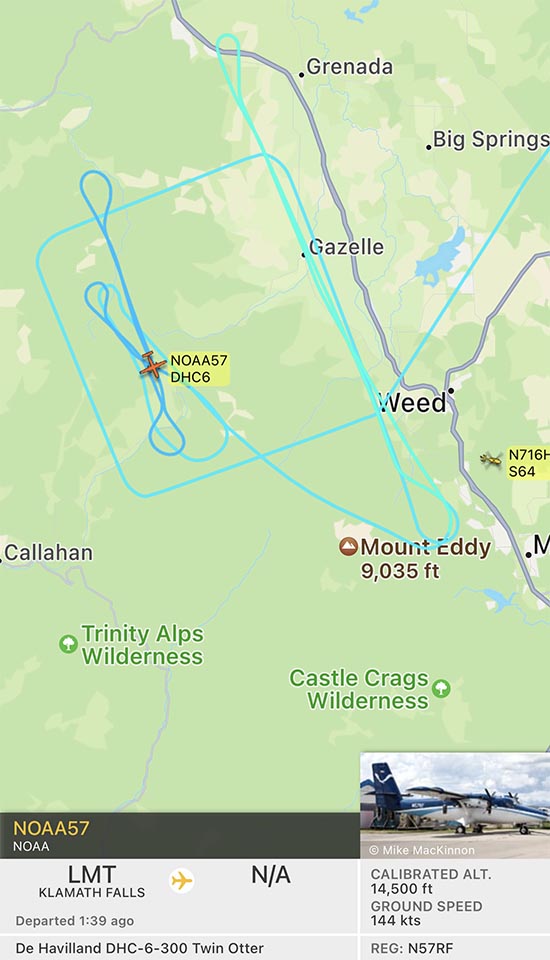
However, there is a NOAA Twin Otter aircraft flying an interesting square pattern over the fire at 14,500 feet. It may be collecting smoke or air quality data.
Updated 7:22 a.m. PDT Sept. 3, 2022

The 3,921-acre Mill Fire has destroyed multiple structures in the town of Weed, 56 air miles north of Redding California. Videos posted online showed residential areas burning as well as one industrial building. Thermal imagery recorded by the FIRIS mapping aircraft showed intense heat at the site of dozens of structures.
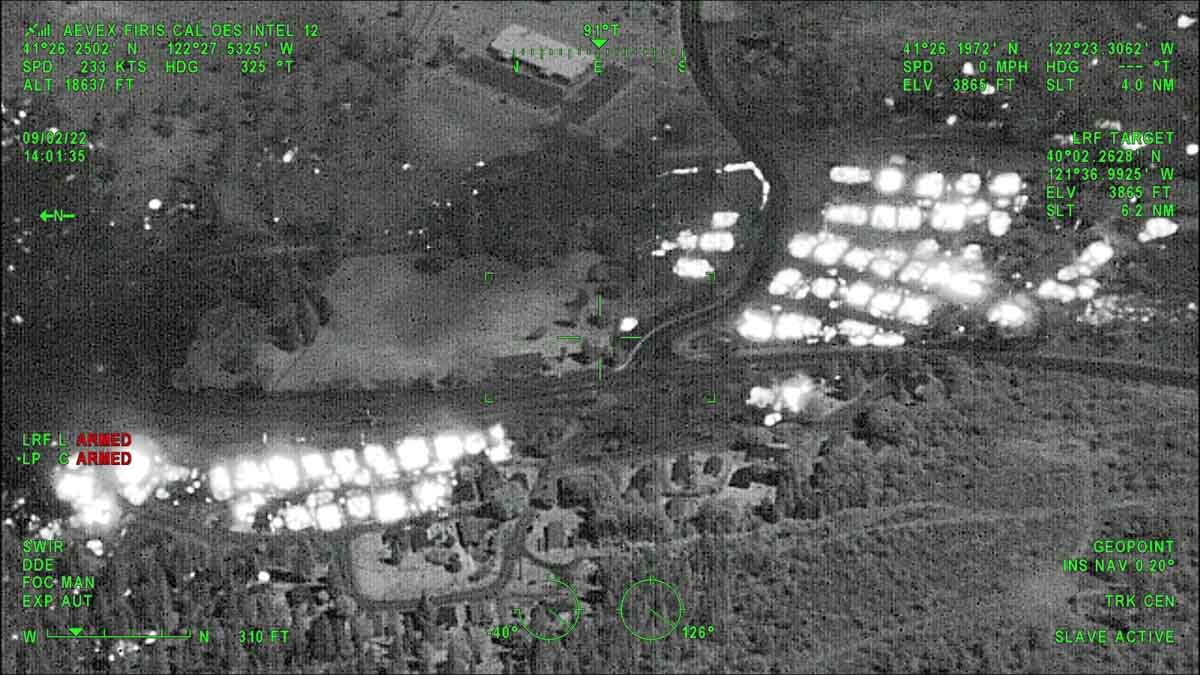
The spread of the Mill Fire slowed overnight as the winds that were gusting at more than 20 mph hour Friday afternoon decreased to 4 mph after midnight and the relative humidity rose to 54 percent.
The Mayor of Weed told the LA Times that the fire appeared to have started at a lumber mill near the town.
Suzi Brady, a CAL FIRE spokeswoman, said several people were injured. At least two were treated at hospitals, NPR reported.
Another fire in the area, the Mountain Fire, was very active through the night. It has spread about five miles north since it started near Gazelle Callahan Road 12 air miles west of Weed. It is about 6 miles southwest of Gazelle. CAL FIRE reports it has burned 1,464 acres, but current unofficial estimates put it more than double that figure.
Both fires are burning primarily on private land, but the Mountain Fire started near the boundary of the Shasta-Trinity National Forest and burned some of the Forest east of Gazelle Callahan Road.
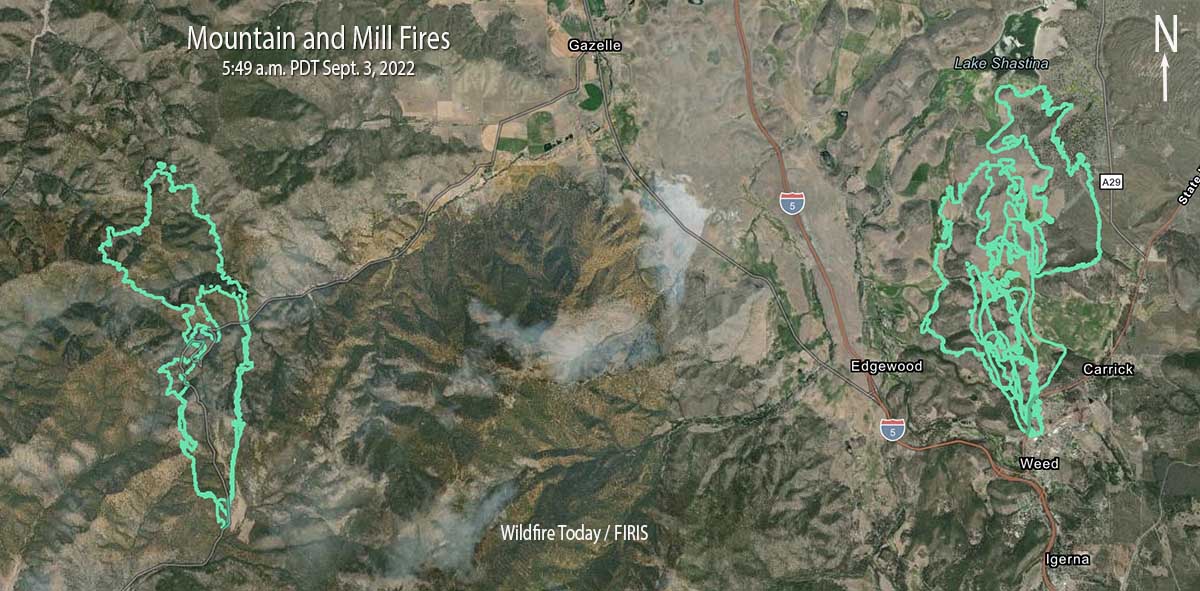
The Mill Fire has light fuel loadings out ahead, and to the east is the burn scar of last year’s 26,000-acre Lava Fire.
The Mountain Fire on the other hand is surrounded by private timber land with no significant recorded history of fire in the National Interagency Fire Center database. However that database is often lacking complete information. It has the potential for growth in all directions, including through numerous clear cuts with dry, light to medium flashy fuel.
Updated 9:32 p.m. PDT Sept. 2, 2022
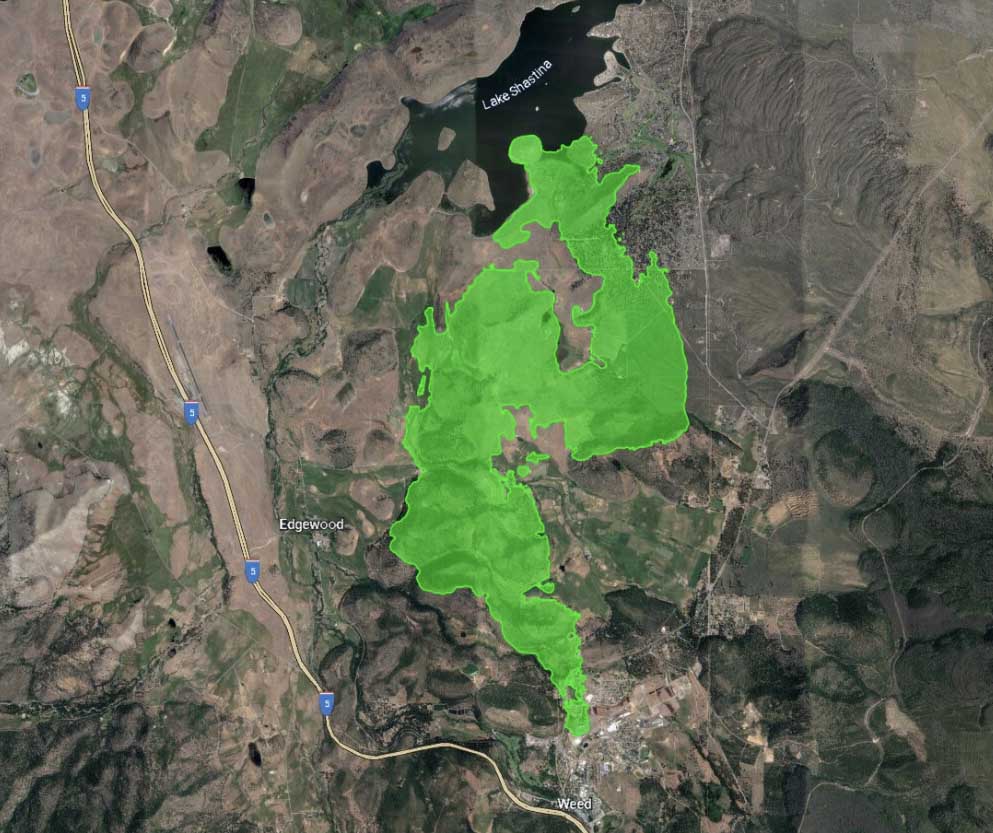
At about 8:10 p.m. the FIRIS aircraft mapped the Mill Fire at 3,921 acres, showing that it had burned from Weed, California north to the shore of Lake Shastina, a distance of nearly six miles.
The Mountain Fire 12 air miles west of Weed near Gazelle Callahan Road has burned approximately 700 acres. It is about 9 miles southwest of Gazelle.
Weather
Friday afternoon a weather station just southeast of Weed recorded 89 degrees, 7 percent relative humidity, and 12 mph winds gusting at 20 to 26 mph out of the east-southeast.
Friday night the winds should decrease to 5 to 10 mph out of the south after sunset, then decrease to 2 to 4 mph after midnight with a maximum RH of 45 percent.
The spot weather forecast for Saturday predicts 88 degrees, 12 percent RH, and winds out of the north at 1 to 3 mph.
The slower wind speeds should give firefighters a chance to put in some direct fireline on Saturday.
5:32 p.m. PDT Sept. 2, 2022

A fire reported at about 12:58 p.m. PDT is threatening structures in the town of Weed which is northwest of Mt. Shasta, 56 air miles north of Redding California.
The blaze is moving rapidly to the north. The southernmost end of the fire is near US Route 97 east of Interstate 5.
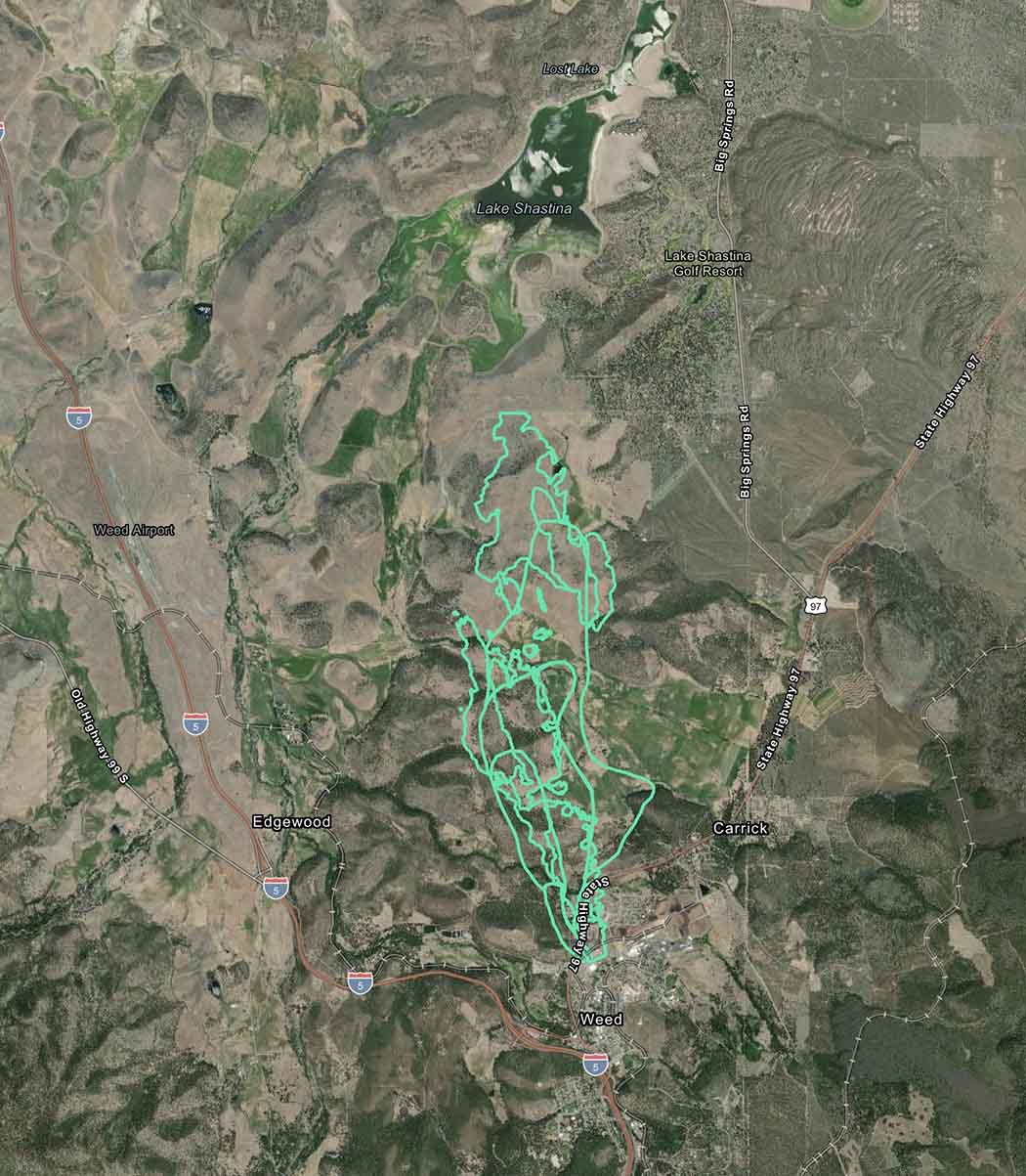
Evacuations are in effect; the details and a map are at Zonehaven.
The last size released was 1,228 acres, but the blaze has grown substantially since then.
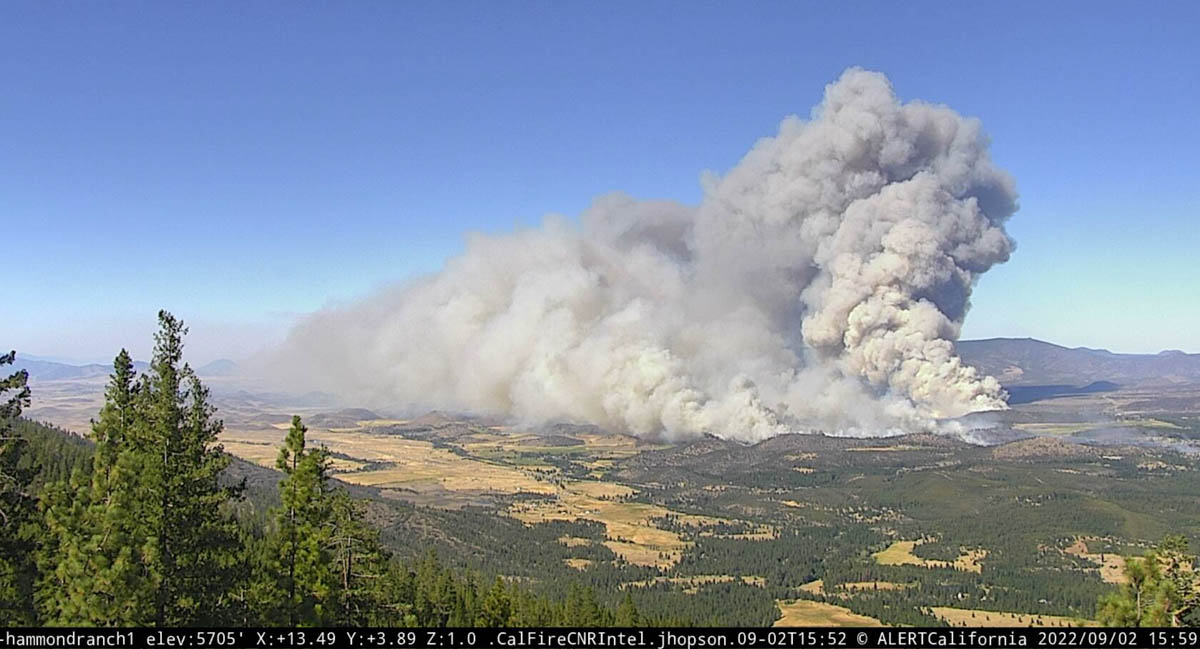
There are widespread power outages in the area which is affecting multiple nearby AlertWildfire cameras.
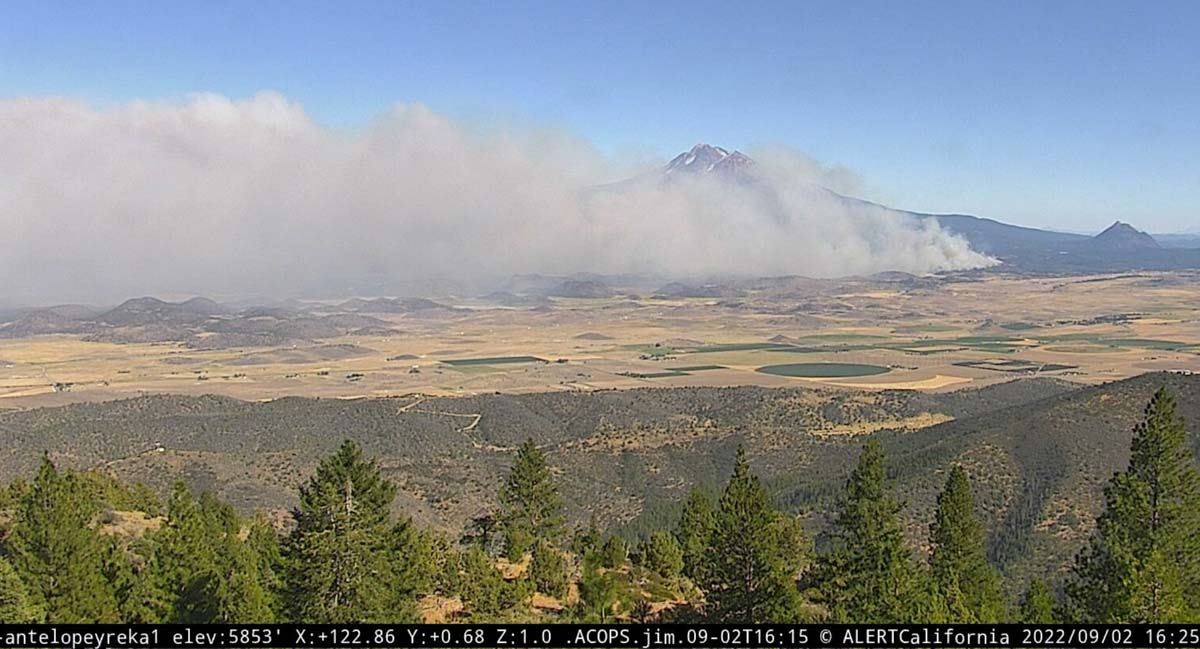
Mountain Fire
Another fire in the general area that started Friday afternoon is the Mountain Fire 12 air miles west of Weed near Gazelle Callahan Road. Both fires are creating very large smoke plumes and are spreading rapidly. The Mountain Fire was reported at 4:19 p.m. Shortly after 5 p.m. Air Attack estimated it had burned about 300 acres.
We will update this article as more information becomes available.
Thanks and a tip of the hat go out to Scott.

